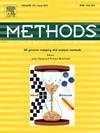A high sensitivity assay of UBE3A ubiquitin ligase activity
IF 4.2
3区 生物学
Q1 BIOCHEMICAL RESEARCH METHODS
引用次数: 0
Abstract
UBE3A is an E3 ubiquitin ligase associated with several neurodevelopmental disorders. The development of several preclinical therapeutic approaches involving UBE3A, such as gene therapy, enzyme replacement therapy, and epigenetic reactivation, require the detection of its ubiquitin ligase activity. Prior commercial assays leveraged Western Blotting to detect shifts in substrate size due to ubiquitination, but these suffered from long assay times and have also been discontinued. Here we develop a new assay that quantifies UBE3A activity. It measures the fluorescence intensity of ubiquitinated p53 substrates with a microplate reader, eliminating the need for Western Blot antibodies and instruments, and enables detection in just 1 h. The assay is fast, cost-effective, low noise, and uses components with long shelf lives. Importantly, it is also highly sensitive, detecting UBE3A levels as low as 1 nM, similar to that observed in human and mouse cerebrospinal fluid. It also differentiates the activity of wild-type UBE3A and catalytic mutants. We also design a p53 substrate with a triple-epitope tag HIS-HA-CMYC on the N terminus, which allows for versatile detection of UBE3A activity from diverse natural and engineered sources. This new assay provides a timely solution for growing needs in preclinical validation, quality control, endpoint measurements for clinical trials, and downstream manufacturing testing and validation.
UBE3A泛素连接酶活性的高灵敏度测定
UBE3A是一种E3泛素连接酶,与几种神经发育障碍有关。一些涉及UBE3A的临床前治疗方法的发展,如基因治疗、酶替代治疗和表观遗传再激活,都需要检测其泛素连接酶活性。先前的商业分析利用Western Blotting检测由于泛素化引起的底物大小的变化,但这些检测时间长,也已停止。在这里,我们开发了一种量化UBE3A活性的新方法。它使用微孔板读取器测量泛素化p53底物的荧光强度,消除了对Western Blot抗体和仪器的需要,并在1小时内实现检测。该检测快速,具有成本效益,低噪音,并使用具有长保质期的组件。重要的是,它也是高度敏感的,检测低至1 nM的UBE3A水平,类似于在人和小鼠脑脊液中观察到的水平。它还区分了野生型UBE3A和催化突变体的活性。我们还设计了一种p53底物,该底物在N端具有三表位标签HIS-HA-CMYC,可用于多种天然和工程来源的UBE3A活性检测。这种新的分析方法为临床前验证、质量控制、临床试验终点测量以及下游生产测试和验证方面不断增长的需求提供了及时的解决方案。
本文章由计算机程序翻译,如有差异,请以英文原文为准。
求助全文
约1分钟内获得全文
求助全文
来源期刊

Methods
生物-生化研究方法
CiteScore
9.80
自引率
2.10%
发文量
222
审稿时长
11.3 weeks
期刊介绍:
Methods focuses on rapidly developing techniques in the experimental biological and medical sciences.
Each topical issue, organized by a guest editor who is an expert in the area covered, consists solely of invited quality articles by specialist authors, many of them reviews. Issues are devoted to specific technical approaches with emphasis on clear detailed descriptions of protocols that allow them to be reproduced easily. The background information provided enables researchers to understand the principles underlying the methods; other helpful sections include comparisons of alternative methods giving the advantages and disadvantages of particular methods, guidance on avoiding potential pitfalls, and suggestions for troubleshooting.
 求助内容:
求助内容: 应助结果提醒方式:
应助结果提醒方式:


